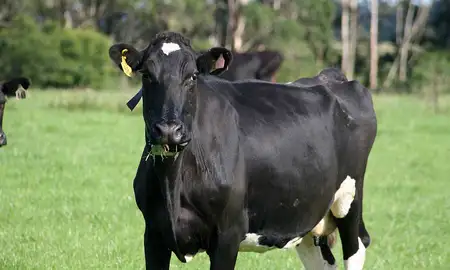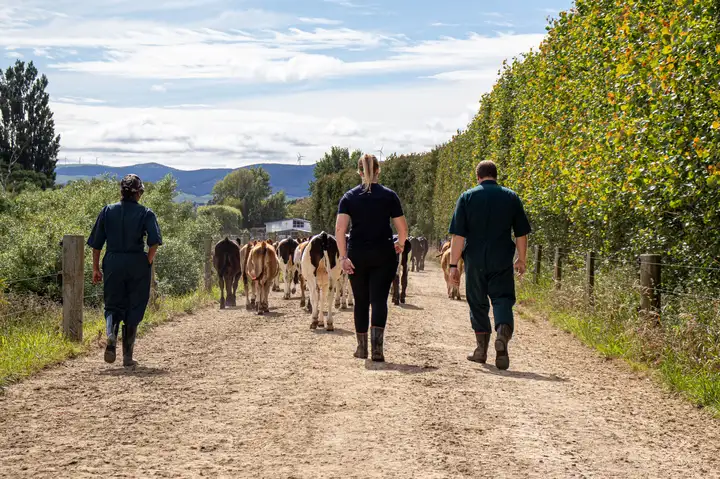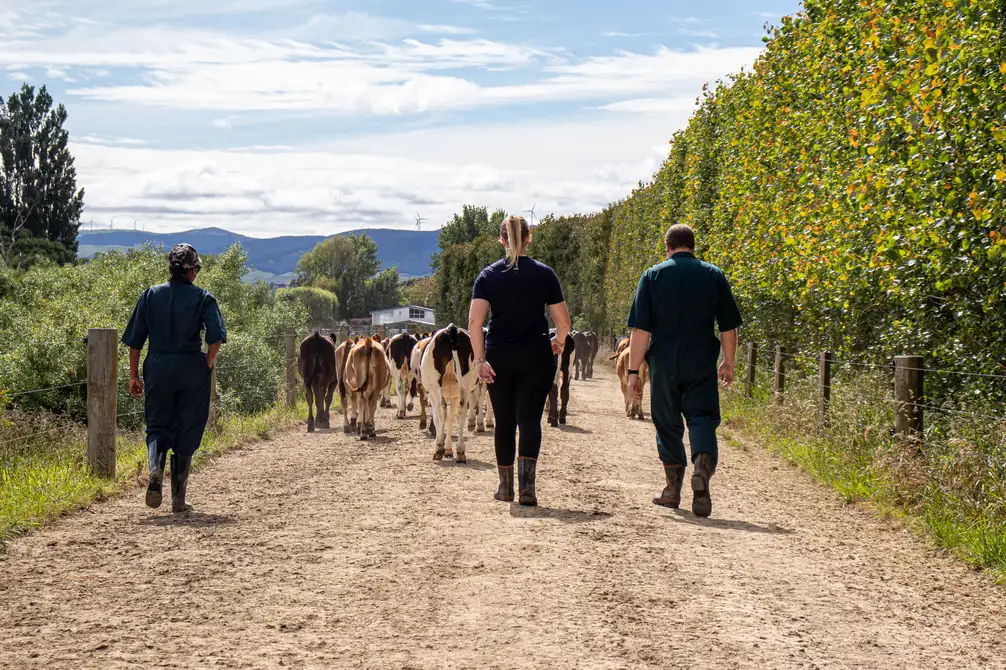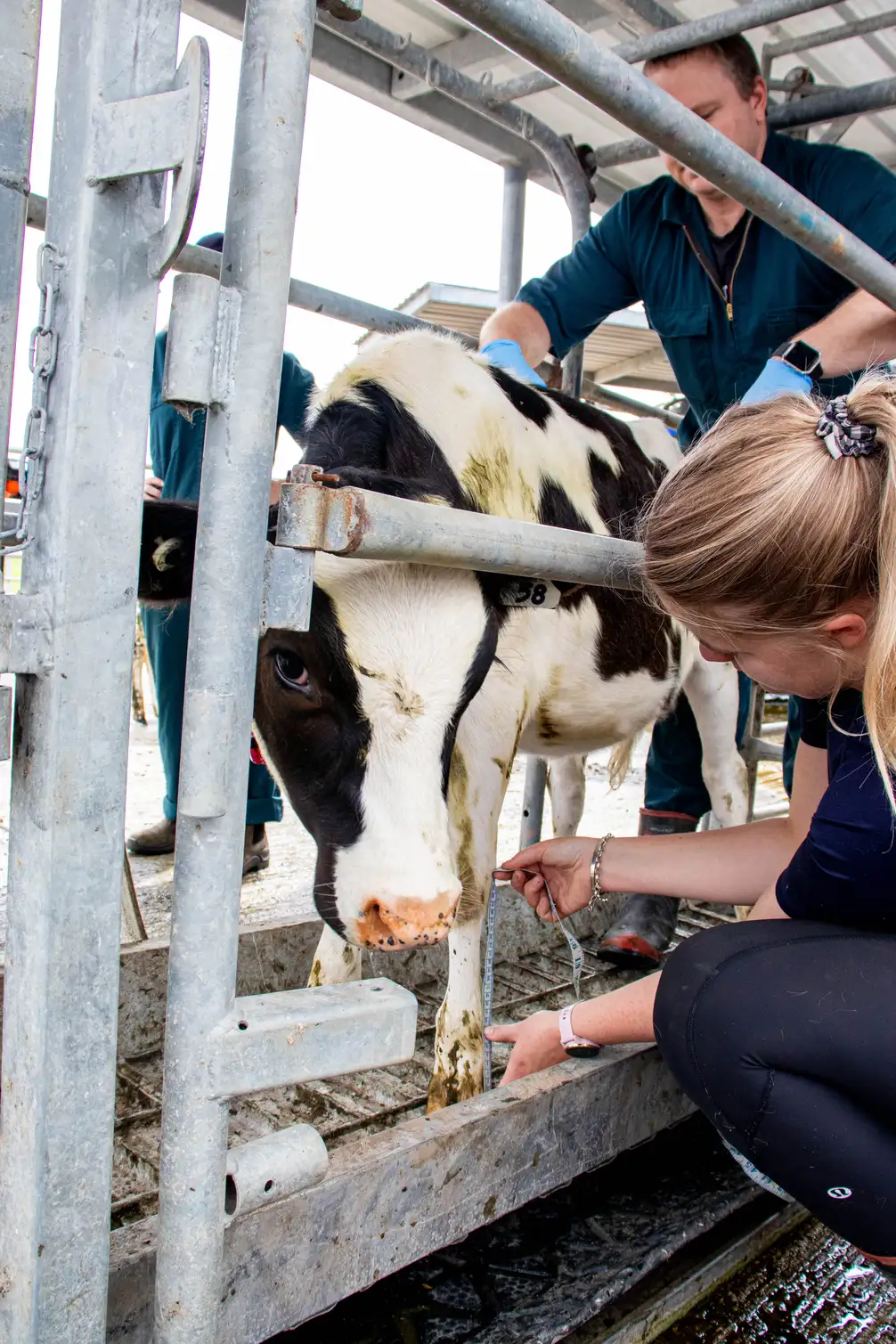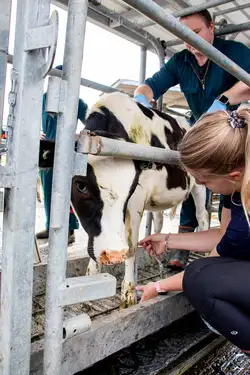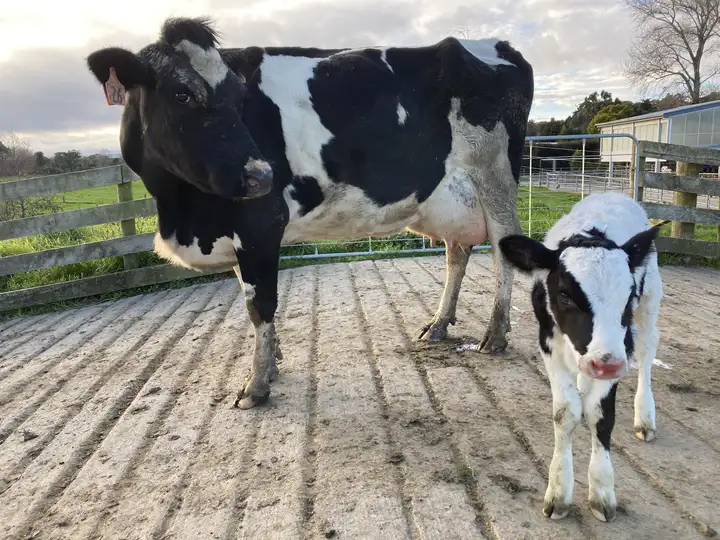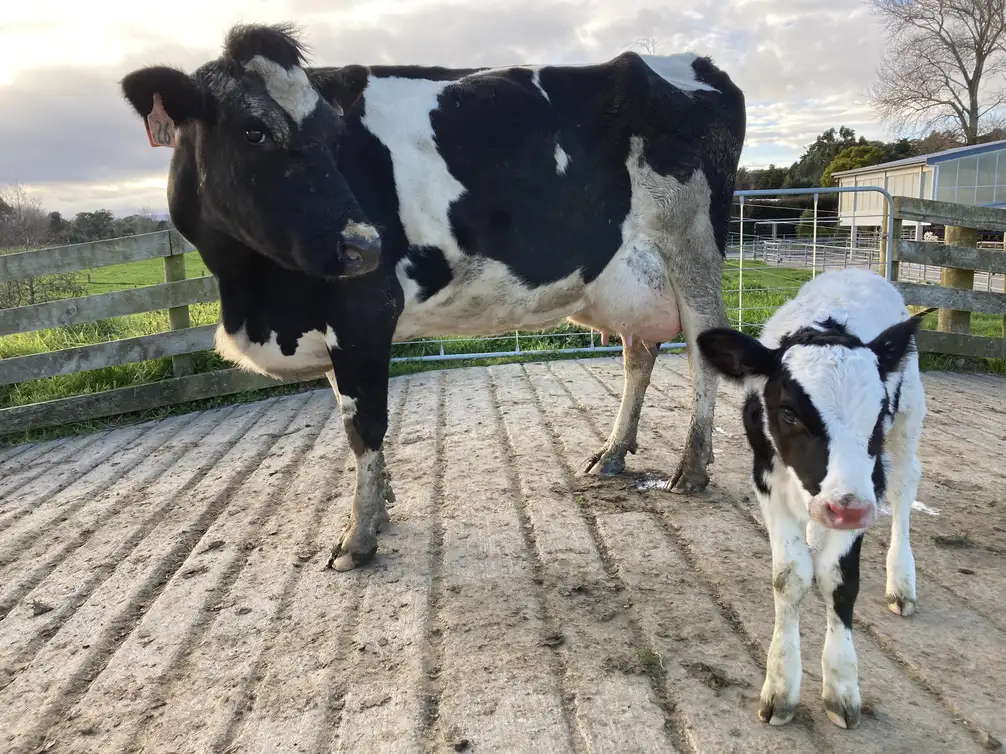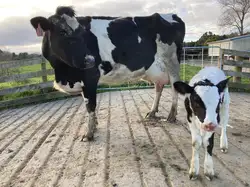
A group of calves on the farm.
Researchers from Te Kunenga ki Pūrehuroa Massey University are embarking on a pilot study to compare the effect of how a calf is reared on the growth of dairy calves and future health of the cows. The study, which is taking place on Massey farms in Palmerston North, compares the rearing of calves artificially (reared by people) to calves that remain with their mothers until they are weaned. It is hoped that this study will lead to further exploration of dairy production methods and improvements in cow growth, health and welfare.
In the dairy industry, it is common practice to separate calves from their dams (mothers) shortly after birth to maximise milk for commercial production. The calves are then reared artificially, using whole milk or milk powder (formula). This artificial rearing of calves comes with increased costs to farmers and potential negative impacts on the calves’ early-stage growth and can sometimes affect longer term health. The artificially reared calves tend to be smaller, which may limit their production when they enter the milking herd.
Allowing the calves to remain with their dams could improve conditions for both calves and cows, providing enhanced calf growth rates early in life. Other advantages may include facilitating social interactions and reducing calf and cow stress responses due to the maternal presence. Despite these potential advantages, little research has been conducted within Aotearoa New Zealand pasture-based dairy systems.
Massey University’s pilot study, led by Dr Natalia Martín from the School of Agriculture and Environment, aims to fill these knowledge gaps by examining the growth, development and behaviour of artificially reared calves versus those suckling from their dams. The study will also explore the economic implications for the dairy farm in both the short and long term. Understanding the trade-offs between milk production (actual and future), calf growth, behaviour and welfare will provide valuable insights into the overall performance and economic viability of different rearing methods for the New Zealand dairy industry.
The team of researchers includes Dr Natalia Martín, Dr Nick Sneddon, Dr Michaela Gibson, Dr Jimena Yapura and others from the School of Agriculture and Environment and the School of Veterinary Science.
Dr Martín recognises calf rearing as an investment into the future of the herd.
“The biggest impacts we are seeing so far are the fast calf growth rates and the imitation of cow behaviours by calves that stay with their dams. We saw a lot of play, nursing and grooming from dams and ‘aunties’ in the group of cows, potentially enhancing animal welfare.
“There are also changes in milk production when a dairy cow is suckling a calf as well as providing milk for human consumption. The farmer’s income will decrease while calves are being reared, but nursing cows are producing the same or even more milk than their counterparts who are not rearing a calf because their milk production bounces back after weaning their offspring. Some of the economic losses from less supplied milk are offset by not having the labour and feed costs of having to artificially rear calves.
“This change to calf rearing has the potential to alter and positively influence the dairy industry. However, separation of the cow and calf still needs to happen at some stage, and the research team are assessing the welfare implications of separating at birth or at weaning at a few months of age, when the bond between pairs is much stronger. We are also investigating if rearing a calf at foot impacts cow reproductive performance, as this is the single most important factor affecting profitability in a pasture-based dairy farming operation.”
The study will follow the calves until they become mothers themselves and start producing milk, to see if the rearing conditions have longer term or lifetime effects. Additionally, the outcomes from this study will support the decision-making process around surplus calves born to dairy cows, by assisting in setting the upper limit of the growth and production performance of dairy calves being raised for beef production. These dairy calves must be of comparable growth to those born and reared on beef dams, but usually the initial stage of rearing and lower growth means they fall behind and are not preferred for meat production. If dairy farmers could wean calves at heavier weights or achieve the current target weights earlier, it may provide an advantage.
The study will help inform the trade-offs that calf rearers must make between milk produced by the herd, milk used for calves, and the labour costs of different calf rearing systems. The comparison of the growth of calves after weaning will help to determine a production value for calves from different rearing systems.
The study is funded by Massey University and Beef+Lamb New Zealand for three years. The results of the initial phase of study are expected to be released in July 2024.
Related news
PhD research explores lameness in dairy cows
Lameness in dairy cows is a major health, welfare, productivity, and economic issue worldwide. Even though dairy cattle are an important part of the agricultural sector of New Zealand and Sri Lanka, research on dairy cattle lameness is lacking in both countries.

Joint dairy research facility in Manawatū boosts on-farm research
Work is close to completion on the Dairy 4 Farm, after Massey partnered with AgResearch to boost on-farm research capability and facilities in the lower North Island.

Environment, animal welfare focus of new dairy research facility
Massey and AgResearch are partnering to build a new dairy research facility on one of the university's farms.
